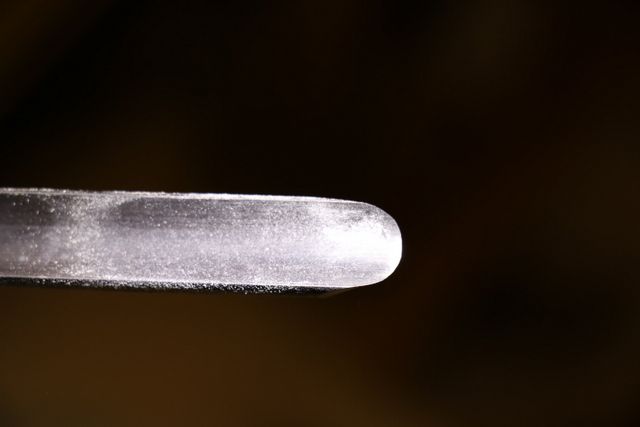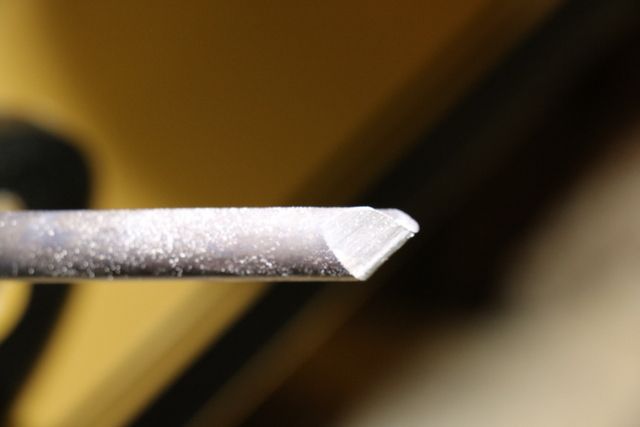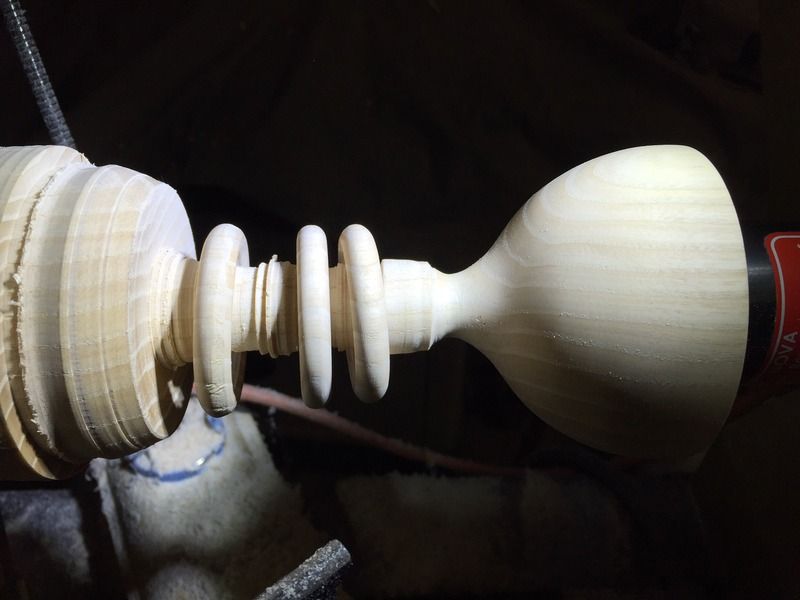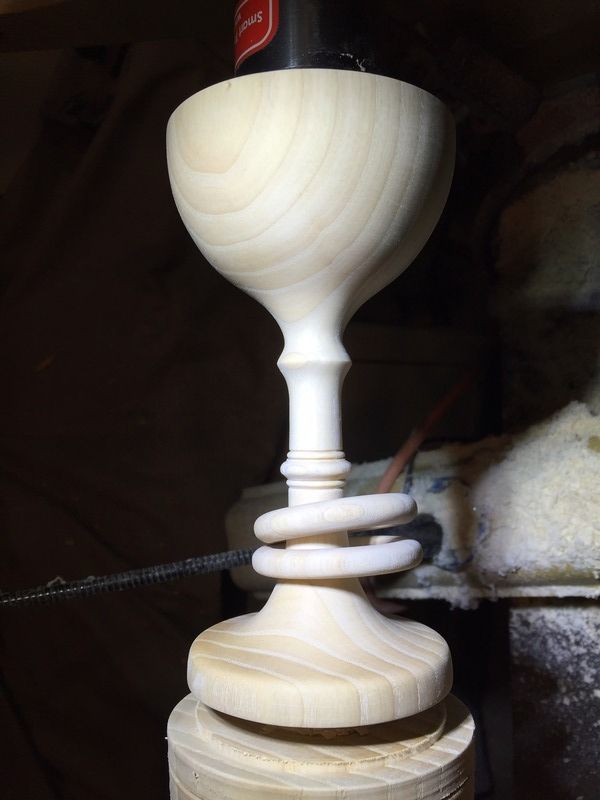Figured I'd have more questions about the subject piece so started this thread although my first question about the nub in the bottom of the cup can be found here:
http://www.sawmillcreek.org/showthre...ttom-of-Goblet
I had a little time to play some more with the goblet. After removing the nub I wanted the taper the bottom of the cup to the stem. I pulled out my new Thompson 1/2" spindle gouge:
Don't know why but even though I've been turning on/off for about 2-years it was a little scary thinking about using this tool. I watched some online videos and thought I knew the technique. I know, my skills are screaming to go to a club but don't seem to have the time to commit to that yet. Anyway, I was doing fine going downhill but then a catch that spiraled me up the outside of the cup. I think I was turning too slow at 500RPM so went to 1000RPM. Had it just about done two more times and "bam" similar catches riding me up the outside of the cup. Then somehow I cleaned it up without another incident. Wonder how thin the cup wall is now? In this case the catches were a good thing. I like the end shape of the cup better than my original plans.
I was trying to ride the bevel, start my cut to the left of center on the tool, started flute straight up (maybe this is the problem), pulled the handle up and turned the flute to the left as I progressed down the cup. Any ideas for the catches?
This test piece is from a very dry ash bat blank. All my other turnings have been soft or green turnings. I noticed as I went down the outside of the cup and tried to form a cove my tool didn't cooperate. It wanted to make a taper. I was even trying to use my hip to try to swing the gouge around. Also, even though the gouge was sharp I seemed to have to push hard to cut. Is this due to the hard ash or bad technique?
Now for the captured rings. I have a 3/8" D-Way beading tool I thought I'd use to get the top of the ring done with. I tried it late last night but didn't cut as smooth and quick as I see in the videos so stopped and will reload this morning. Think I was trying to cut too high above center. I see to cut the bottom of the ring some purchase a hook tool and some seem to make a tool - suggestions please. Again any hints appreciated.
I'm too scared to make the stem any thinner right now. I'ts about 1/2" diameter - is this OK? (OK - to tell the truth I'm afraid to get another catch and ruin my cup shape if I go thinner.)
Thanks,
Mike







 Reply With Quote
Reply With Quote



 . Guess I'll have to research how to make my own. I got the first ring loose with the Sorby ring tool but just used a parting tool to get the next two.
. Guess I'll have to research how to make my own. I got the first ring loose with the Sorby ring tool but just used a parting tool to get the next two.

